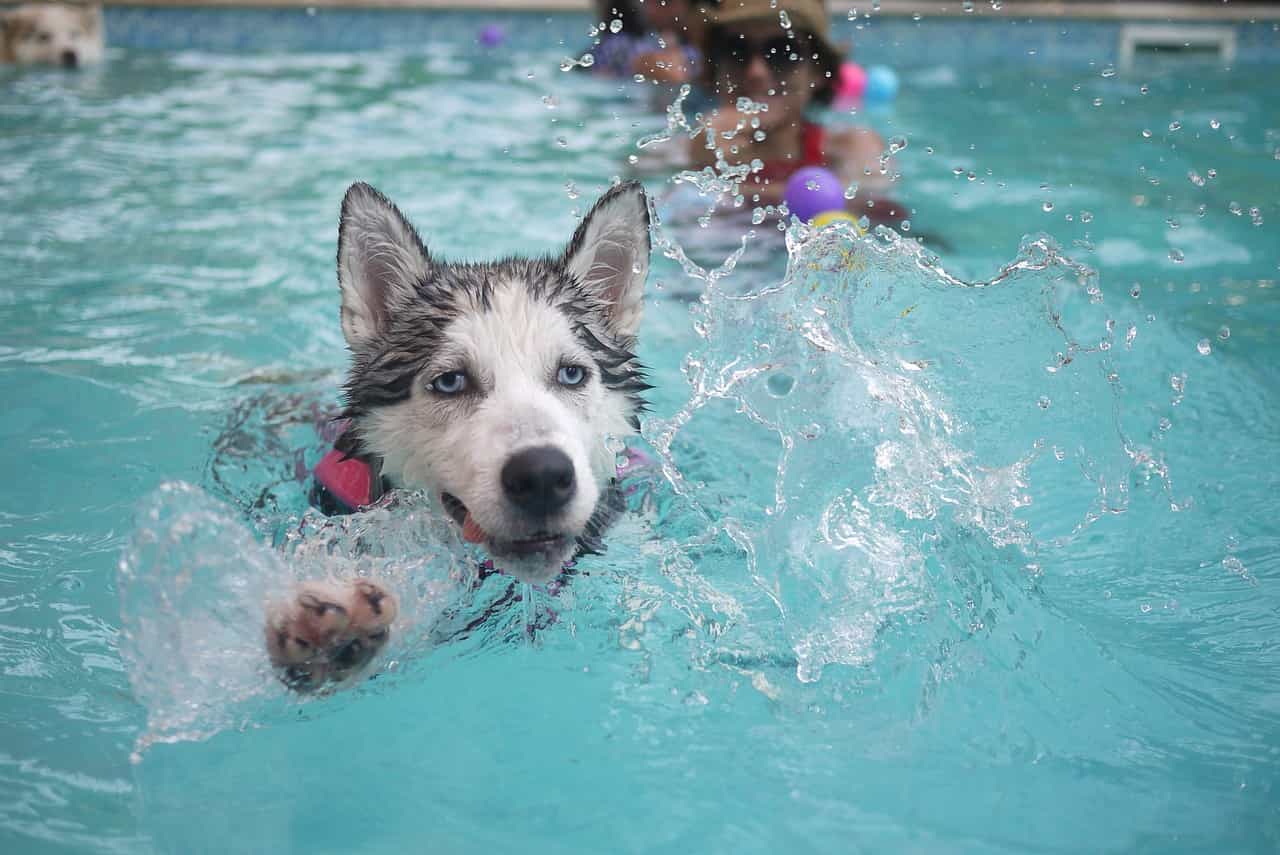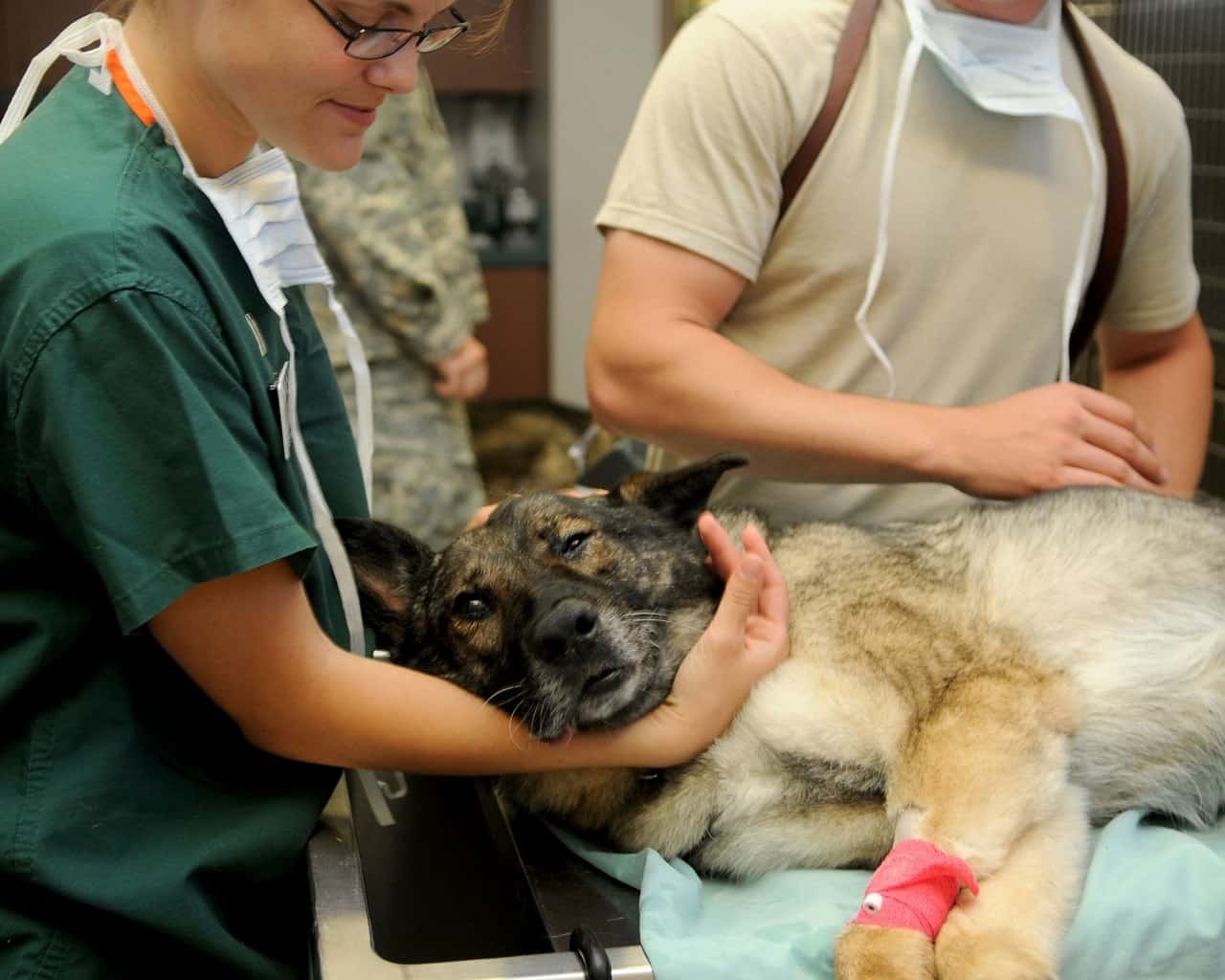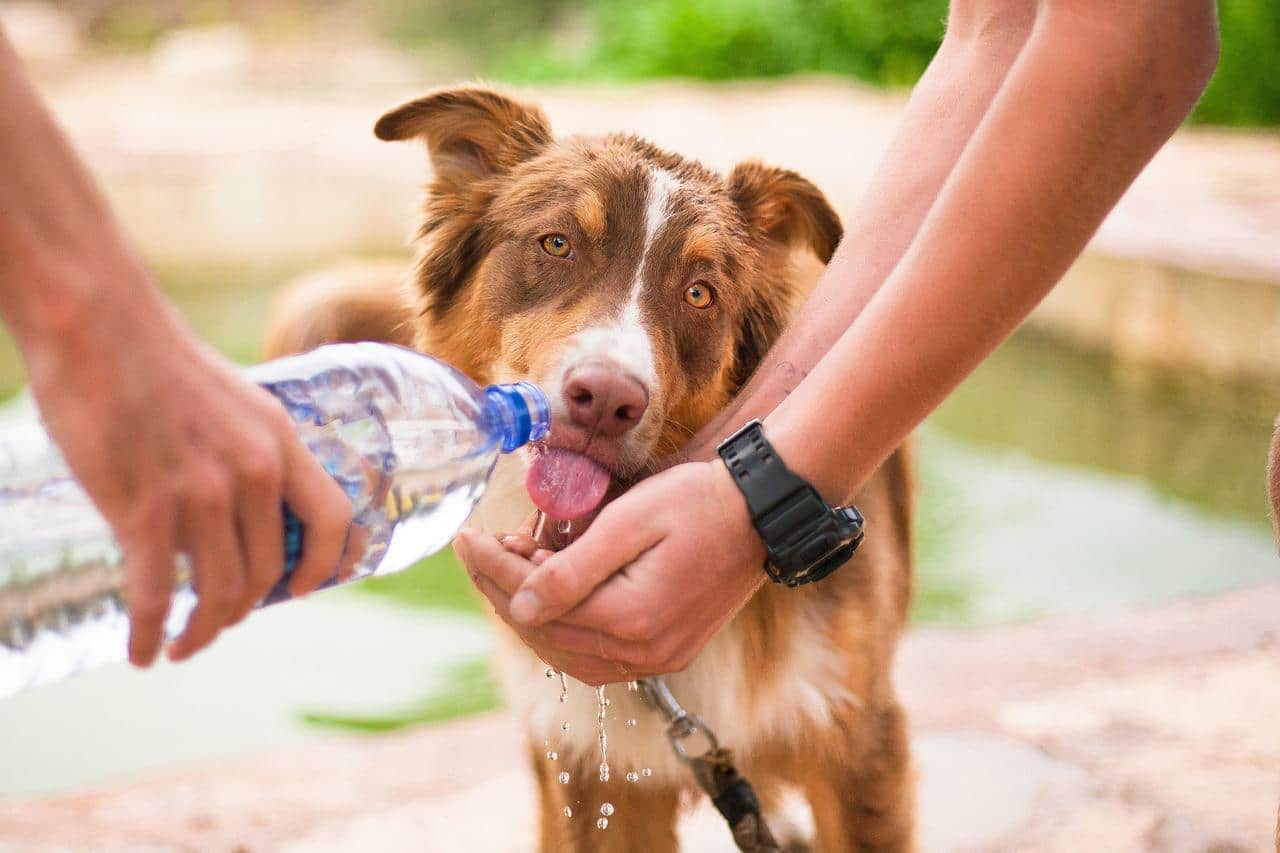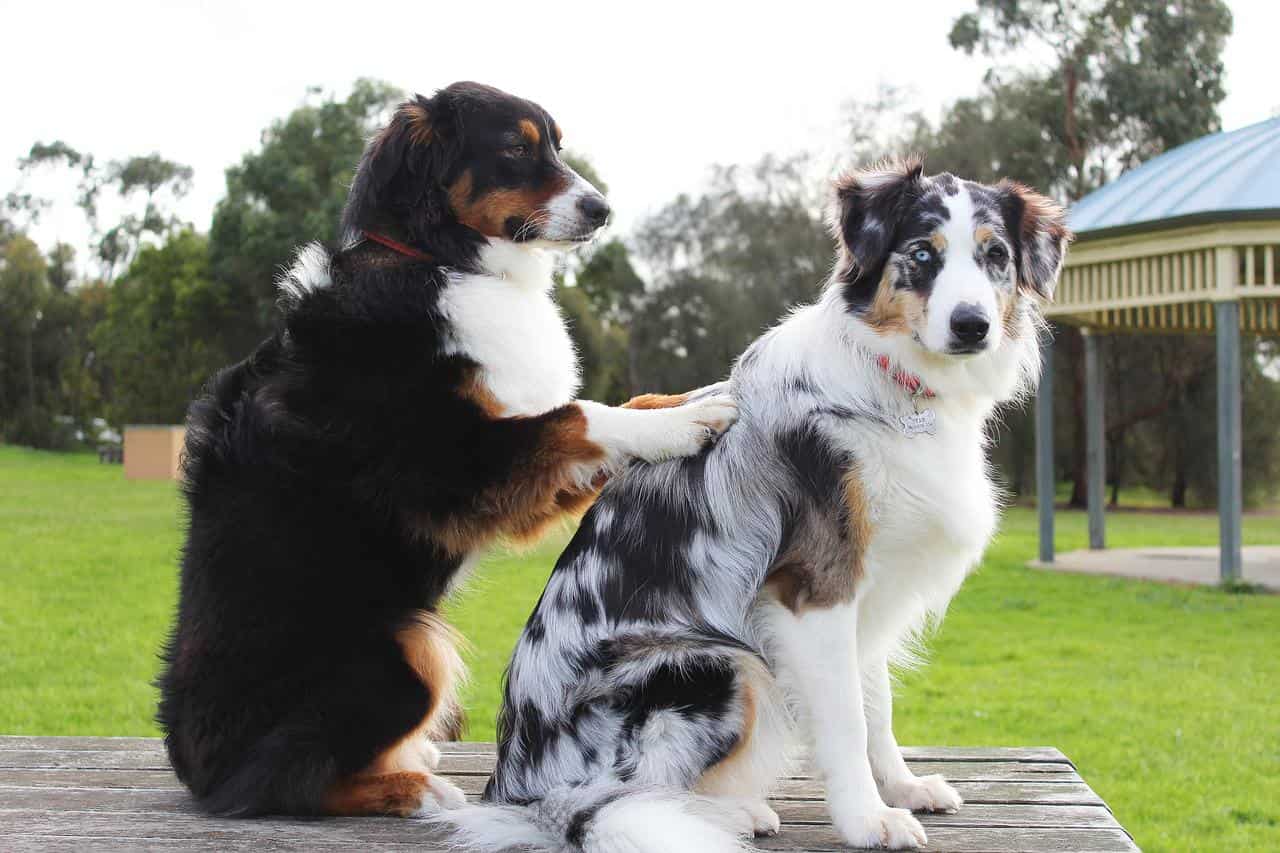Essential to maintaining the optimal health condition of your pet is a regular vet visit. Indeed, it is wise of you to feed your Border Collie or other dogs with a healthy diet, easy access to clean water, a clean bed, and lots of exercise. But do you know what is more important than all of this? It’s to talk to your vet about tips and methods that can help you prevent illness and other health problems like elbow dysplasia in dogs.
What Is Canine Elbow Dysplasia?
Elbow dysplasia in dogs is a kind of disease that typically impacts the front limb or also referred to as limping. This happens when bone joints are not fit. Eventually, this leads to difficulty and pain in every move, especially in the forelimb.
Truth is, this condition involves several developmental abnormalities. There are 3 bones that comprise the dog’s elbow joint, and these are:
- Radius
- Ulna
- Humerus
Under normal circumstances, these bones fit perfectly together. But circumstances like abnormal weight distribution, growth abnormalities, lameness, and arthritis development are known causes of elbow dysplasia.
Various Forms of Elbow Dysplasia in Dogs
Elbow Dysplasia or simply ED is basically just an umbrella term. Truth is, there are several other conditions that are associated to it like:
- Elbow incongruity
- Medial Compartment Disease
- Osteochondritis Dissecans (OCD)
- Ununited Anconeal Process (UAP)
- Fragmented Medial Coronoid Process (FCP)
All of these conditions could affect the elbow simply because the fitting of these bones is not “right”. Though these health conditions may affect the dog’s elbow differently, they all have one thing in common. It’s the fact that each leads to elbow arthritis.
Fragmented Medial Coronoid Process (FCP)
FCP stands for Fragmented Medial Coronoid Process. This affects the development of the coronoid processes. Dogs with such conditions first begin to show fissures or the development of cracks that are separated from other bones.
Usually, it takes place on the process, medial or inner. When this separation occurs, it is known to cause joint instability and pain among affected dogs.
A dog with FCP can be treated by undergoing surgery. The goal is to remove abnormal bone or cartilage. This is an attempt to revert the joints back to their normal function and position.
Osteochondritis Dissecans (OCD)
An Osteochondritis Dissecans or OCD is a kind of abnormality in bone development from the cartilage. What happens here is, in joints like the shoulder, ankle, knee, and elbow, a flap of cartilage could soon develop. If not treated, it can lead to lameness.
On the other hand, among the joints mentioned, it’s the shoulder and the elbow that are frequently impacted. OCD’s development is only secondary to array of factors like genetics, growth rate, diet, hormonal imbalance, trauma, and joint architecture.
Ununited Anconeal Process (UAP)
The Ununited Anconeal Process or UAP is one manifestation of ED. Often, large dog breeds are affected by this condition.
The diagnosis for dogs with UAP is that there seems to be an abnormality in their growth plate. Plus, their anconeal process couldn’t merge with the main part of the ulna.
Between male and female dogs, the former are the most affected.
This health condition is discussed to be hereditary in some breeds. But other known factors for the development of UAP are nutrition like having excess calcium, excess weight, trauma, and hormonal influences.
Medial Compartment Disease
This health condition is defined as the loss of cartilage on each side of the elbow joint. Usually, this condition is identified at a later stage and is also accompanied by acute osteoarthritis.
Fortunately, there’s a management plan that can be incorporated into your dog’s life if they are suffering from one. Among which is ensuring to control your dog’s body weight, give them proper exercise, enrolling them in physical therapy sessions, and giving dietary supplements as well as anti-inflammatory painkillers.
This should be enough in controlling lameness. Though if the improvement is short-lived, then it’s time to seek other treatments.
Elbow incongruity
Elbow incongruity is a term used in describing poor elbow joint alignment. There are two features that illustrate elbow incongruity, and these are:
- Shape abnormality of the ulnar trochlear notch
- Step between ulna and radius that is caused either by a short ulna or radius
In treating this condition, it can be performed either by two options: subtotal coronoid ostectomy and arthroscopic fragment removal.
Signs and Symptoms of Elbow Dysplasia in Dogs

In as early as 4 months, dogs suffering from elbow dysplasia might reveal signs of lameness and mild to moderate pain in their forelimbs.
While both elbows can be affected, one of which will definitely be diagnosed with a more severe condition. Following are tell-tale signs that your dog is suffering from ED.
- Stiffness or limping which worsens after every exercise
- Not showing interest or enthusiasm when playing or going for a walk
- Elbows are held at an odd angle
- Front paws are pointing outwards
- Elbows look puffy or swollen (more acute cases)
As mentioned before, you can notice these symptoms in as early as 4 months. But for mild EDs, these symptoms may begin to manifest later in your dog’s life. Perhaps, once they’ve developed elbow arthritis.
Prognosis of Elbow Dysplasia in Dogs
It’s unfortunate to learn that there’s no cure for elbow dysplasia in dogs. Rather, it requires lifetime management and treatment. It’s good if the dog responds to the treatment. Others, not so much. There’s a tendency that some dogs experience debilitating symptoms and chronic pain leading to shortened life.
Truth is, treatment of elbow dysplasia in dogs should not be that hard. A straightforward approach for the treatment is by having you and your dog adapt to healthy lifestyle changes.
An example would be, watching your dog’s weight and ensuring that it is healthy and manageable. Doing a weight watch with your dog significantly reduces elbow stress. Thus, see to it that your dog follows a balanced diet.

Exercise is also a wonderful approach. This ensures that your dog still lives a quality life despite having elbow dysplasia. When following this method though, only introduce exercises that your dog is comfortable doing. A good example would be swimming. In fact, this is a low-impact exercise that helps improve the mobility of the limb. Through this, it can help prevent or reduce elbow stiffness.
Diagnosis of Elbow Dysplasia in Dogs
At home, pet owners may notice stiffness or lameness in their dogs. In such case, they’re easy to make assumptions about the possible health conditions the dog has. This is the reason why it is preferable to bring the dog to your trusted vet.
With vets, they never guess whether the lameness on their patient is triggered by ED or not. Rather, they use a combination of X-Rays and clinical tests to support their findings. Clinical examinations will enable the vet to observe your Border Collie trot, stand and walk. Through this, they can come up with an educated answer on what is really inflicting their dog patient.
Treatment of Elbow Dysplasia in Dogs
Contrary to popular belief, puppies that are diagnosed with ED could still live a long and happy life. This is assuming that they’re given proper treatment. Keep in mind, that the primary objective of any treatment is prolonging the onset of osteoarthritis. Occasionally, it may include surgery but most of the time focuses on pain management.

While the treatment is focused on pain management, it will actually depend on how serious the symptoms were. Medical treatment could incorporate a plethora of approaches similar to:
- NSAIDS
- Nutraceuticals such as glucosamine
- Stem cell therapy
- Exercise
- Physical therapy
As much as possible, non-invasive procedures are the preferred methods that have elbow dysplasia as well as osteoarthritis.
Aftercare of Elbow Dysplasia in Dogs
You may opt to have your dog undergo treatment or surgery for elbow dysplasia. While this is a sensible decision, you should be aware of the aftercare needed.
- Weight control – your dog may have been treated by a professional. However, this doesn’t guarantee that they’re free from it. Sadly, there’s still a chance that their condition could worsen. It’s true especially if they become overweight. Having said that, you must make it your mission to keep them at a healthy weight. This avoids putting more stress on their elbow joints.
- Exercise – after being treated for ED, your dog may begin to lose interest in exercising. Fortunately, there are exercises that they can still do. For instance, short walks don’t hurt their elbows. You can think of other low-impact exercises as well similar to swimming.
- Rest – after exercising your dog, make it a point that they get good rest.
- Medication – after the treatment, your vet is going to give anti-inflammatory drugs to your dog. This is an essential medication to help them control the pain brought by their ED.
- Hydrotherapy and physiotherapy – these two are awesome for your dog is getting the exercise they need. Not only that, it is gentle on the joints.
Prevention of Elbow Dysplasia in Dogs
People in the dog community suggest that stopping the breeding of dogs affected by ED is the way to solve this problem. But this isn’t the only way.
There are screening programs that can be performed to check the dog’s elbow before they’re mated. Always inquire about elbow scores if you plan to purchase a pedigree dog. After all, reputable breeders always have their dogs screened before offering them to future owners.

Another method that can help avoid elbow dysplasia is by giving a joint supplement to your dog. These supplements are highly recommended for a number of reasons:
- Improving function
- Reducing inflammation
- Slowing the progression of damaged joint
- Promotes healing
- Increases water retention in cartilage
Chondroitin and glucosamine are the two popular ingredients in joint supplements. In fact, these are used both in dogs and humans.
Cost of Treating Elbow Dysplasia in my Dog

Treating elbow dysplasia in dogs can be costly. Regardless, if your dog is a puppy or already at end-stage arthritis, costs can be pretty expensive. Puppies and young dogs are candidates for surgery. In such case, treatment and surgical diagnosis can easily run you anywhere from 1,500 to 4,000 dollars. And that’s per elbow! This figure can be magnified among dogs that are old and with end-stage arthritis.
Border Collie and Elbow Dysplasia
According to studies, roughly 70 percent of dogs are impacted by elbow dysplasia. While this is true, those who have Border Collie can rarely see this in their pets.

On the other hand, since elbow and hip dysplasia are both genetic conditions, your Border Collies could still be affected. To avoid this from happening, have them checked by your vet. This way, they can determine the best treatment plan, if your Collie has it.
Conclusion: Saving Your Dog from Elbow Dysplasia
The way in which dogs can be affected with elbow dysplasia is through genetics, bone abnormalities, and wear on the joints. Let us face the sad reality. Despite medical advances, there’s still no cure for elbow dysplasia in dogs.
Because of this, some people in the dog community try to resolve this by stopping the breeding of dogs with this condition. Checking for dog elbow scores and having them screened are just alternative options that are as effective in preventing other dogs suffer from ED.
Even if your dog has ED, this doesn’t mean that you can just give up. Your dog can still live a healthy and quality life. You can have them checked by your vet and ask for medication or a treatment plan to ease their pain.
For more serious conditions, the dog will be assessed for surgical diagnostics. If they have to, perform research and ask vets what would be the best aftercare options for your dog.


